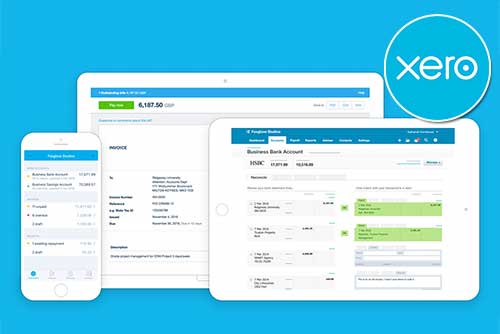Gross Profit vs Net Profit: A Comprehensive Guide
Understanding the financial health of a business requires diving into its profit metrics, primarily gross profit and net profit. These two figures provide crucial insights into the effectiveness of a company’s operations and its overall profitability.
In this article, we’ll explore the definitions, differences, and importance of both gross and net profit in financial analysis.
What is Gross Profit?
Gross profit refers to the total revenue minus the cost of goods sold (COGS). COGS includes all expenses directly related to the production of the goods and services a company sells, such as materials and labour used in production. It doesn’t account for other expenses, such as marketing or administrative costs.
Gross profit measures how efficiently a company uses labour and supplies in producing goods.
How to Calculate Gross Profit
The gross profit formula is as follows:
Gross Profit = Total Revenue − Cost of Goods Sold
The gross profit calculation is very simple:
- Identify your total sales revenue: This is the total amount of money your business makes from selling its products or services. It’s the top line of your company’s income statement.
- Determine the cost of goods sold (COGS): This includes all the direct costs associated with producing the goods or services your company sells.
A high gross profit typically indicates that a company is effectively generating revenue from its core business activities while efficiently managing the direct costs associated with production, whereas a low gross profit may suggest inefficiencies in production or pricing strategies, potentially indicating challenges in maintaining profitability and competitive positioning within the market.
What is Net Profit?
Net profit, often referred to as net income or the bottom line, is the income that remains after all operating expenses, interest, taxes, and other non-operating expenses have been deducted from total revenue.
How to Calculate Net Profit
The net profit formula is as follows:
Net Profit = Total Revenue − Total Expenses
Total expenses include COGS, sales, general and administrative expenses, interest expenses, taxes, and more.
Here’s a simple step-by-step guide on how to calculate net profit:
- Identify your total revenue: This is the total amount of income generated before any deductions. It includes all sales, services, and any other income sources.
- Calculate your total expenses: This includes all the costs associated with running your business. It’s not just the cost of goods sold, but also operating expenses like rent, salaries, utilities, and depreciation. Don’t forget other business expenses like debt payments and taxes.
- Subtract your total expenses from your total revenue: This is where the net profit formula comes into play.
A high net profit indicates that a company’s total revenue exceeds all expenses, while a low or negative net profit suggests that expenses surpass revenue, indicating potential financial challenges or inefficiencies in operations.
Importance of Gross and Net Profit in Financial Analysis
- Decision Making: Both metrics are vital for internal and external decision-making. Management uses these figures to make strategic decisions such as pricing, cost management, and operational adjustments. Investors and creditors look at these numbers to assess profitability and financial stability.
- Trend Analysis: Trends in gross and net profit can indicate the direction in which a company is moving. Consistent growth in these figures generally suggests good management and a potentially successful investment.
- Sector Comparison: Comparing these metrics across similar companies or industries can reveal competitive advantages or weaknesses and help benchmark performance.
Gross Profit vs Net Profit: The Differences
While both gross profit and net profit are derived from total revenue, they serve different purposes and are influenced by different aspects of business operations:
- Scope of Costs: Gross profit focuses solely on the costs directly tied to production, excluding overheads and other indirect costs. In contrast, net profit considers all expenses, including operating and non-operating costs.
- Indicative Value: Gross profit tells you how effectively a company can produce goods and generate sales from its core business activities. It is primarily about operational efficiency. On the other hand, net profit shows the overall profitability and includes the company’s ability to manage overhead, financing, and other expenses.
- Usefulness: Gross profit is particularly useful for analysing companies in manufacturing or goods-based industries, where production efficiency is a key performance indicator. Net profit, being a more universal measure, is crucial for all stakeholders (investors, creditors, management) to assess the business’s financial health and profitability.
Gross Profit Margin vs Net Profit Margin
Gross profit margin and net profit margin are key financial metrics that illustrate different aspects of a company’s profitability. Here is a brief look at their definitions and calculations:
What is Gross Profit Margin?
While gross profit is an absolute monetary value calculated by subtracting the COGS from total revenue, gross profit margin, on the other hand, is a percentage that shows the gross profit as a proportion of the company’s total revenue. It provides insight into how much a company retains in earnings from each pound of revenue after covering the direct COGS.
The gross profit margin formula is as follows:
Gross Profit Margin = (Gross Profit/Total Revenue) x 100%
A higher gross profit margin indicates that a company is more efficient at converting sales into profit, suggesting better cost management and a stronger competitive position.
What is Net Profit Margin?
Net profit represents the absolute amount of profit after deducting all expenses from total revenue, while net profit margin expresses this profit as a percentage of total revenue, providing insight into the profitability relative to sales volume.
The net profit margin formula is as follows:
Net Profit Margin = (Net Profit/Total Revenue) x 100%
A higher net profit margin shows that a company is more efficient at converting sales into actual profit, indicating better control over costs and potentially better management.
The Significance of Understanding Gross Profit and Net Profit
Understanding the distinction between gross and net profit is paramount for any business. It not only aids in comprehensive financial analysis but also helps in strategic decision-making. A company’s gross profit offers a snapshot of its production efficiency, while a company’s net profit reflects the overall profitability, considering all expenses.
These metrics are crucial for various stakeholders, including investors, lenders, and tax authorities. They provide insights into the company’s overall financial health, profitability, and operational efficiency.
However, it’s important to recognise that gross and net profit have their limitations, as they may not fully capture the complexities of overhead costs, non-operating expenses, or future investments required for sustained growth.





















